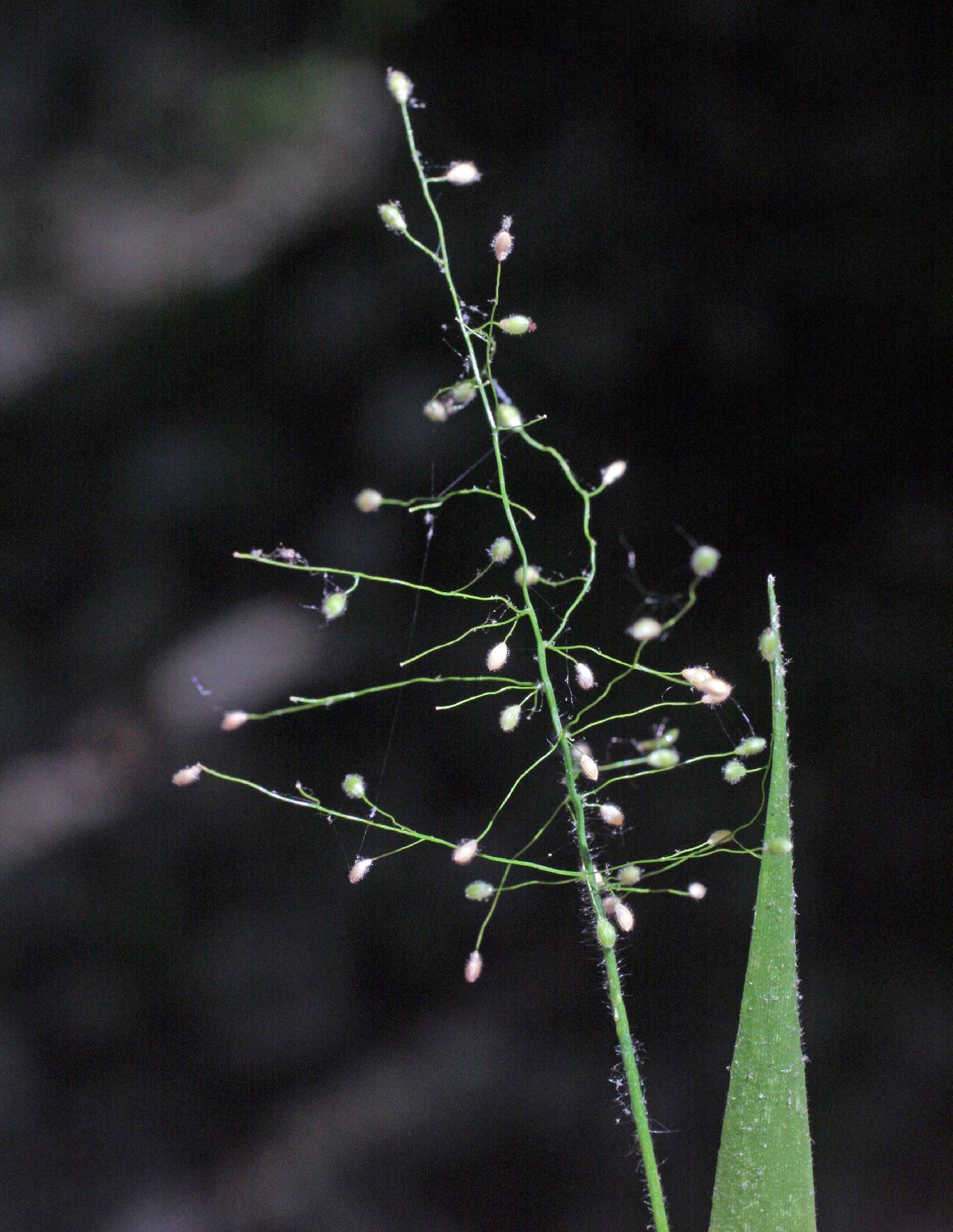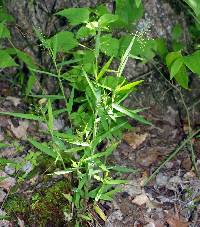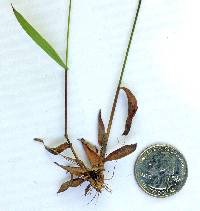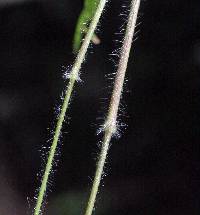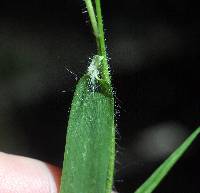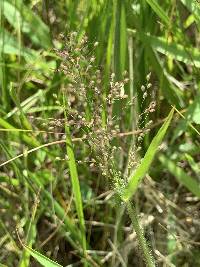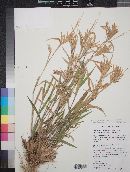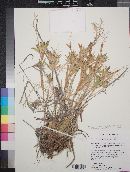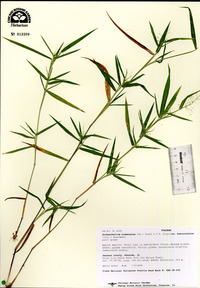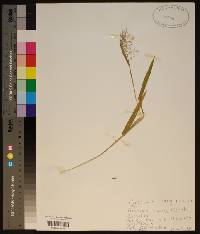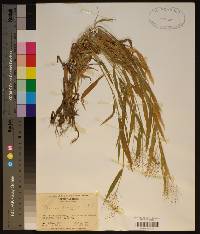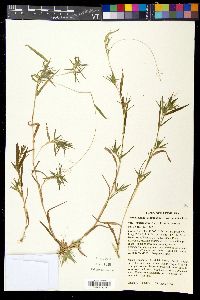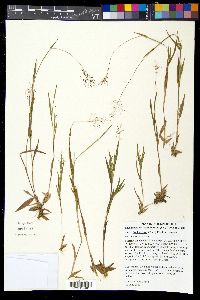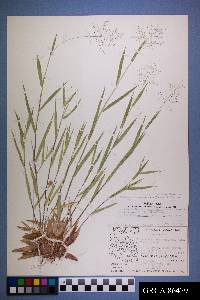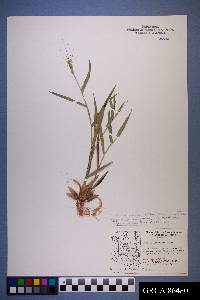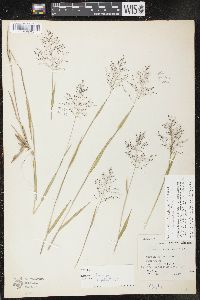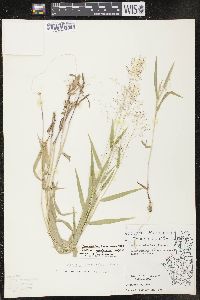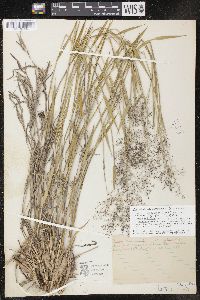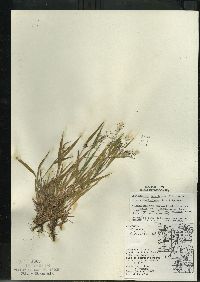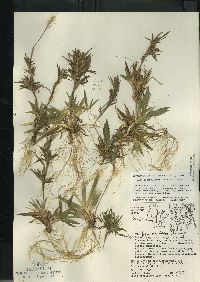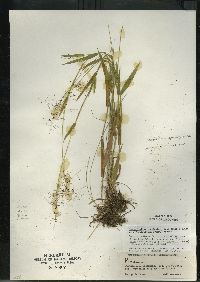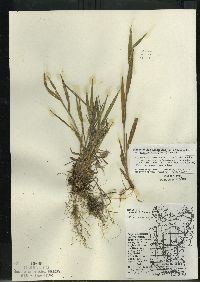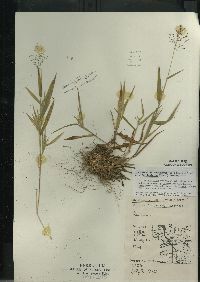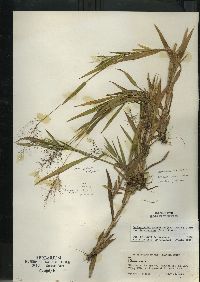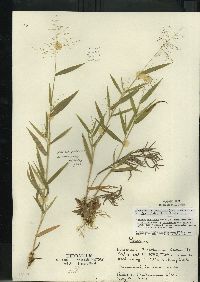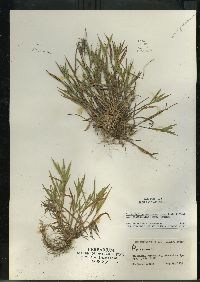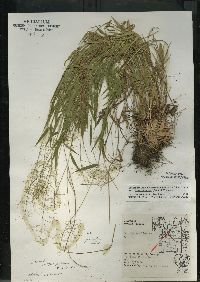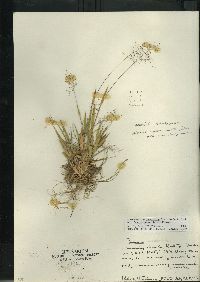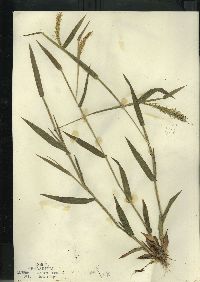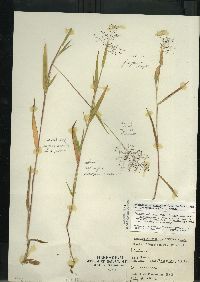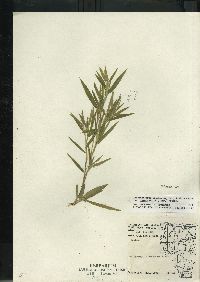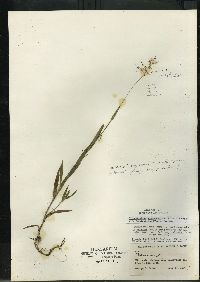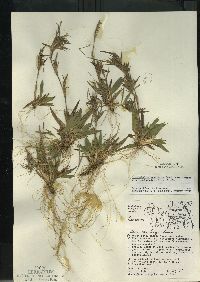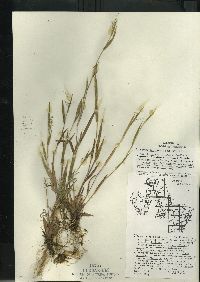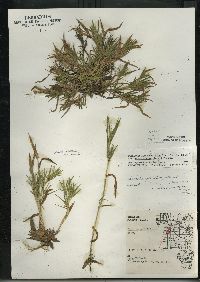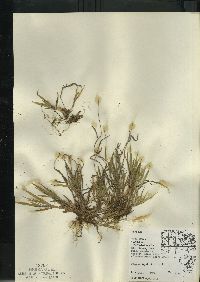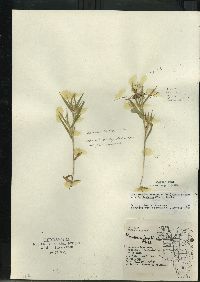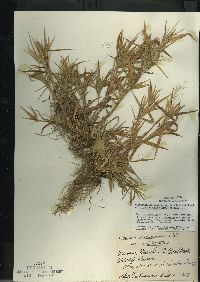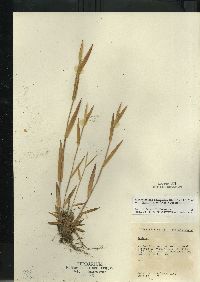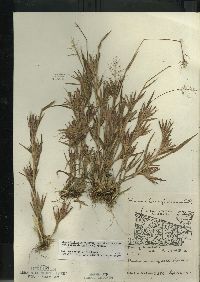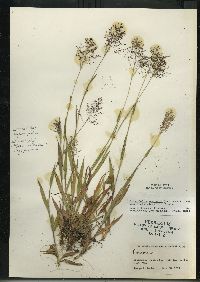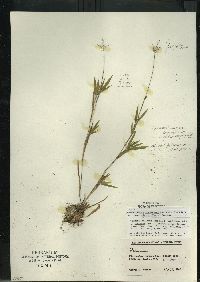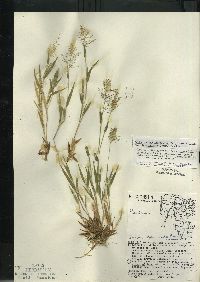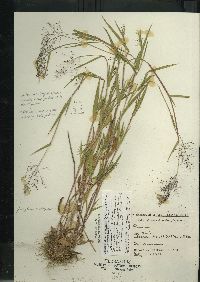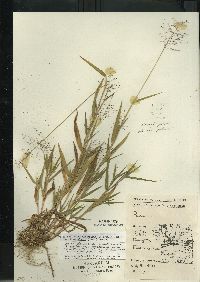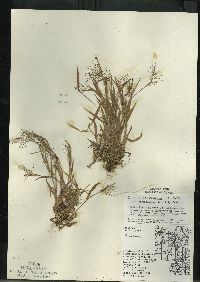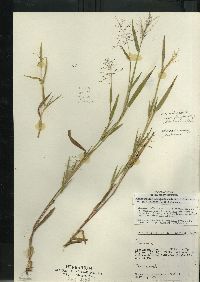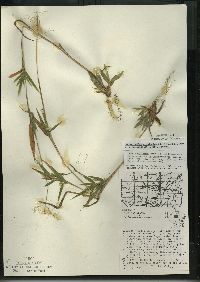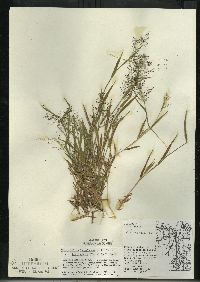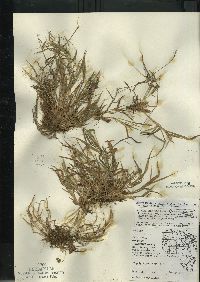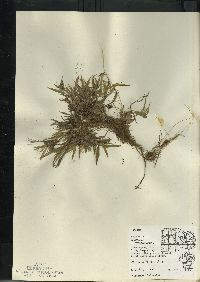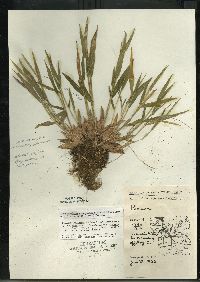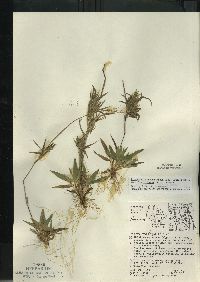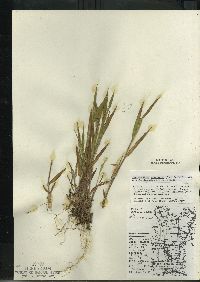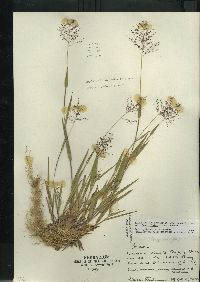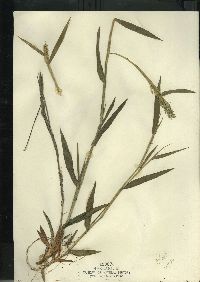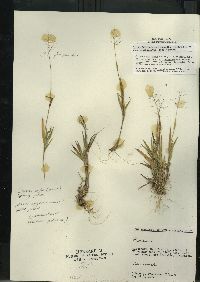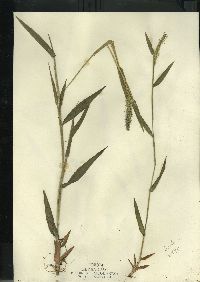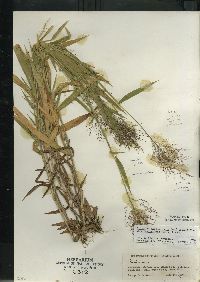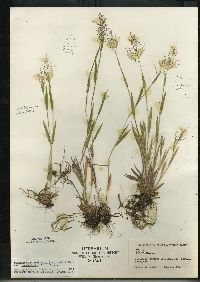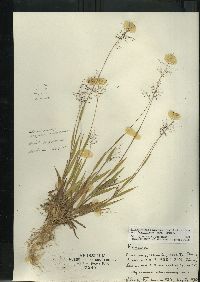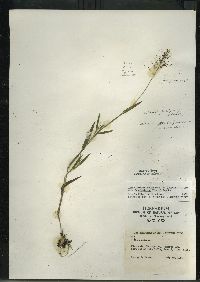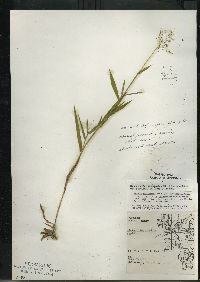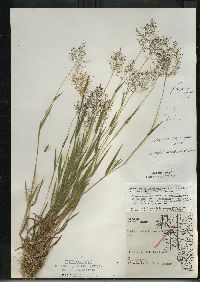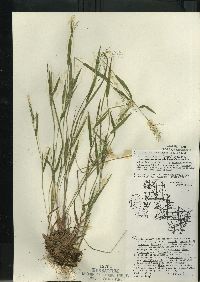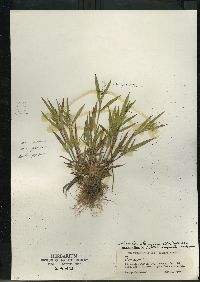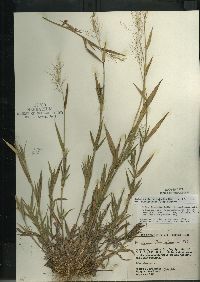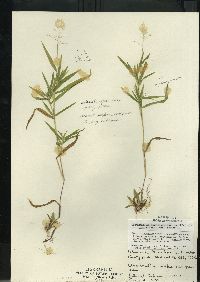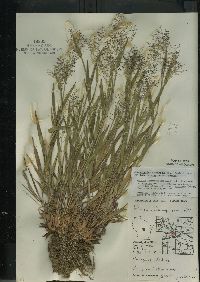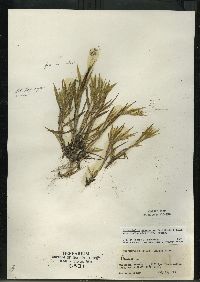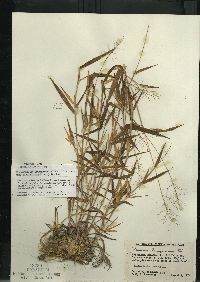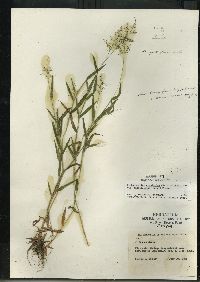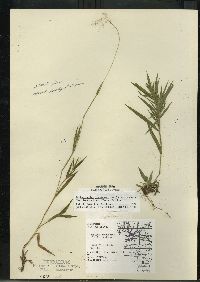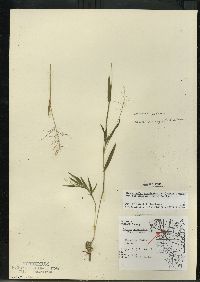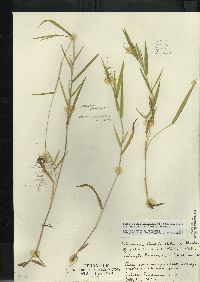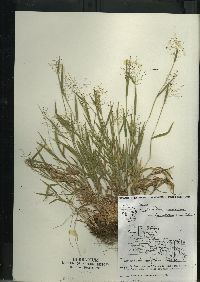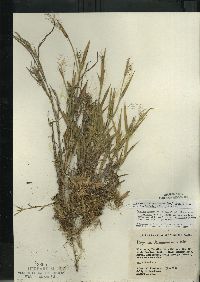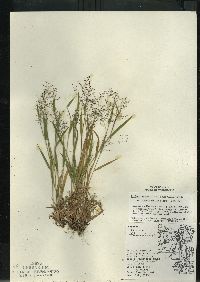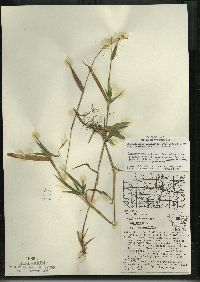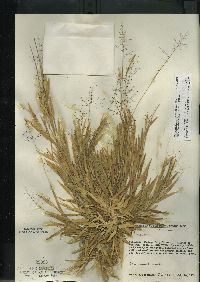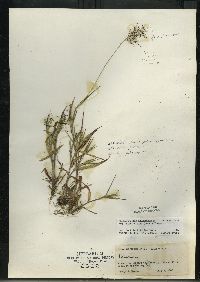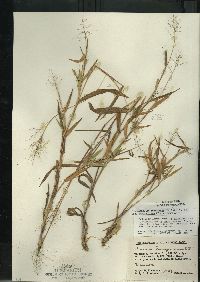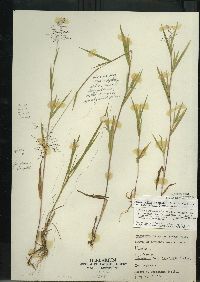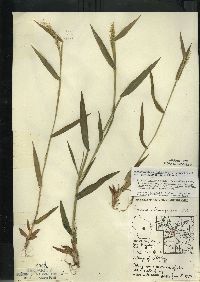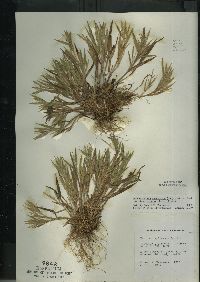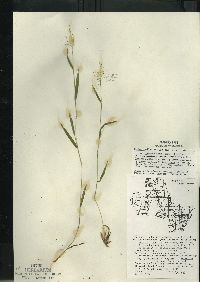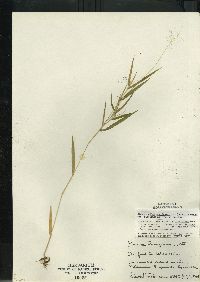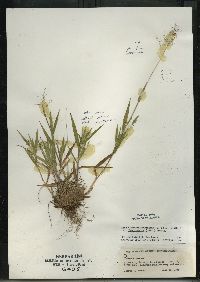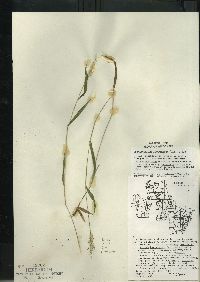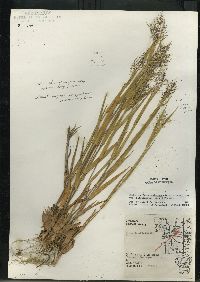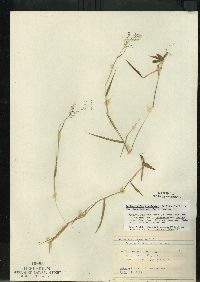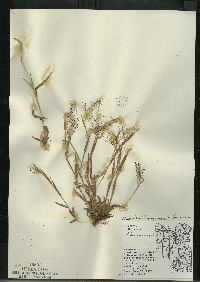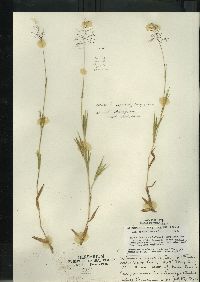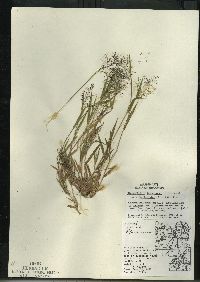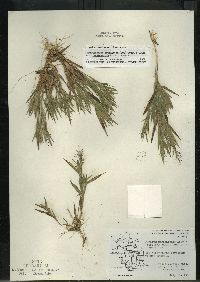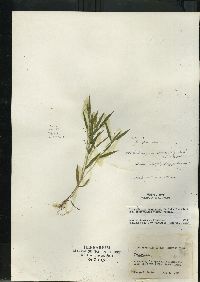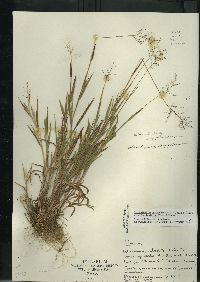
|
|
|
|
Family: Poaceae
Western Witch Grass, more...Western Panicgrass, western panicgrass
[Dichanthelium acuminatum var. fasciculatum (Torr.) Freckmann, moreDichanthelium lanuginosum (Ell.) Gould, Dichanthelium lanuginosum var. fasciculatum (Torr.) Spellenberg, Dichanthelium lanuginosum var. lanuginosum , Dichanthelium subvillosum (Ashe) Mohlenbr., Panicum acuminatum var. fasciculatum (Torr.) Lelong, Panicum brodiei St. John, Panicum curtifolium Nash, Panicum glutinoscabrum Fern., Panicum huachucae Ashe, Panicum huachucae var. fasciculatum (Torr.) F.T. Hubbard, Panicum languidum A.S. Hitchc., Panicum lanuginosum Ell., non Bosc ex Spreng., Panicum lanuginosum var. fasciculatum (Torr.) Fern., Panicum lanuginosum var. huachucae (Ashe) A.S. Hitchc., Panicum lanuginosum var. septentrionale (Fernald) Fernald, Panicum lanuginosum var. siccanum Hitchc. & Chase, Panicum lanuginosum var. tennesseense (Ashe) Gleason, Panicum lassenianum Schmoll, Panicum lindheimeri var. fasciculatum (Torr.) Fern., Panicum subvillosum Ashe, Panicum tennesseense Ashe] |
Panic Laineux Plants yellowish-green to olivaceous or purplish. Culms 15-75 cm, suberect, ascending or spreading; nodes often with spreading hairs, occasionally with a glabrous ring below. Cauline sheaths with ascending to spreading, papillose-based hairs, occasionally with shorter hairs underneath; midculm sheaths about 1/2 as long as the internodes; blades 5-12 cm long, 6-12 mm wide, spreading to ascending, bases with papillose-based cilia, abaxial surfaces usually pubescent, adaxial surfaces pilose or glabrous, hairs shorter than 3 mm. Spikelets 1.5-2 mm (tending to be longer in the western part of its range), obovoid to ellipsoid. Dichanthelium acuminatum subsp. fasciculatum grows primarily in disturbed areas, open or cut-over woods, thickets, and grasslands, in dry to moist soils, including river banks, lake margins, and marshy areas. It is widespread in temperate North America, growing from Canada to Mexico, but it is somewhat less common in the western part of its range, where it often occurs on moister areas. Dichanthelium acuminatum subsp. fasciculatum includes probably the most widespread, ubiquitous, and variable assemblages of forms in the species. It is not always clearly separable from the other subspecies of D. acuminatum, especially subsp. acuminatum, subsp. implicatum, and subsp. lindheimeri. Gene exchange with other Dichanthelium species (including D. dichotomum, D. laxiflorum, D. ovale, D. commutatum, and D. boreale) probably occurs not infrequently. Perennial herb, tufted 15 cm - 0.75 m tall Inflorescence: a terminal, branched arrangement of spikelets (panicle). Primary panicles atop the culms, often open, rather dense, 3 - 12 cm long, one-fourth to three-fourths as wide as long, well-exserted. Secondary panicles (when present) atop the branches. Fruit: a caryopsis, indehiscent, enclosed within the persistent lemma and palea. Culm: nearly upright or ascending or spreading, 15 cm - 0.75 m long, round in cross-section, hollow. Nodes sometimes swollen, often with spreading hairs and occasionally a hairless ring below. Spikelets: 1.5 - 2 mm long, ellipsoid or reverse egg-shaped with a blunt to nearly pointed apex, variously hairy. Basal leaves: in a rosette. Blades shortly egg-shaped to lance-shaped, distinct from stem blades. Stem leaves: four to seven, alternate, two-ranked. Sheaths usually shorter than internodes (about half as long at mid-culm), with bumpy-based hairs. Ligules and pseudoligules 1 - 5 mm long, composed of hairs. Blades lax or firm, spreading to ascending, distinctly longer and narrower than basal leaves, 5 - 12 cm long, 6 - 12 mm wide, lance-shaped with a rounded or almost heart-shaped base, parallel-veined, hairy beneath, sometimes softly hairy above, (hairs under 3 mm long), with a marginal fringe of bumpy-based hairs basally. Glumes:: Lower glumes usually one-fourth to one-half as long as spikelets, blunt to pointed at the apex. Upper glumes rounded to pointed at the apex. Lemmas:: Lower lemmas similar to upper glumes. Upper lemmas longitudinally lined, shiny, with rolled-up margins above. Paleas:: Lower paleas shorter than lower lemmas, thin. Upper paleas longitudinally lined. Florets:: Lower florets sterile. Upper florets bisexual, stalkless, 1 - 1.5 mm long, 0.5 - 1 mm wide, ellipsoid with a blunt to pointed apex, plump. Anthers three. Stigmas red. Similar species: No information at this time. Habitat and ecology: Rare in the Chicago Region, and known only from Lake County, Indiana. It is found in sandy areas. Occurence in the Chicago region: native Etymology: Dichanthelium comes from the Greek words di, meaning twice, and anth, meaning flowering, referring to plants that may have two flowering periods. Acuminatum means "tapering to a long point." Fasciculatum means bundled or banded. Author: The Morton Arboretum From Flora of Indiana (1940) by Charles C. Deam [Deam splits Dichanthelium acuminatum subsp. fasciculatum into four taxa in the genus Panicum.] [Panicum huachucae:] This is a frequent to common species of dry ground throughout the state. It is found in open places in all kinds of woodland, preferring dry soil but often common in bottom lands along streams and in clearings and along roadsides. I have not seen it in wet places. [Deam's Panicum huachucae var. fasciculatum is] frequent throughout the state and associated with the species [Panicum huachucae]. It is doubtful whether this variety is distinct from the species. It seems to be only a shade or drought form. [Panicum subvillosum:] This species has been found only in Lake County and our record is based upon two specimens in the U. S. National Herbarium and one in the herbarium of the University of Wisconsin. [Panicum tennesseense:] This is an infrequent grass found throughout the state in various habitats. My specimens are from dry sands, moist sand on the marly shore of a lake, wooded slopes, and hard, white clay soil in a fallow field in the Wabash Bottoms. ...... The most recent treatment (Thomas (2015, Phytoneuron 2015-50:1–58)) calls this taxon D. lanuginosum. It occurs throughout the state. Indiana Coefficient of Conservatism: C = 2 Wetland Indicator Status: FAC |

